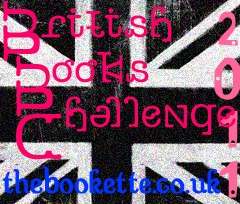Book Review: The Story of Doctor Dolittle by Hugh Lofting
According to The Teachers Calendar, School Year 2010-2011, today is the 125th anniversary of the birth of Hugh Lofting, author of the Doctor Dolittle books.
Book:The Story of Doctor Dolittle by Hugh Lofting
Genre(s): Children’s chapter book
Publisher: Tor
Publication date: 1998, originally published 1920
Hardback: 106 pages
Summary: The Story of Doctor Dolittle was the first published book in the Doctor Dolittle series. The second one, The Voyages of Doctor Dolittle, won the Newbery medal in 1923. In the Story of Doctor Dolittle, we learn how he went from being a medical doctor for people to a doctor who treats, and talks to, animals. He achieved success in his new field, and then lost it by his insistence on providing a home for a crocodile that his human clients fear will eat their pets. Thus, Doctor Dolittle has little to lose when he learns that the monkeys in Africa need a doctor to help them deal with a contagious deadly disease. He takes the journey with his favorite animals, curing the monkeys while having many adventures both before and after that main event. As a reward for his efforts, the monkeys talk a pushmi-pullyu, a two headed deer-related creature, to go with the doctor so he can make his fortune by displaying it in England.
Thoughts: First off, there are racist elements. I suppose that is no different from every other book featuring an Englishman in Africa written during this period. I found the racist bit in this book, where Dr. Dolittle successfully turns Prince Bumpo from a black prince into a white prince, particularly galling. I’ve been learning the song, “I Am What I Am” from La Cage aux Folles, most famously recorded by Gloria Gaynor. So, I am predisposed at the moment to object to attacks on self-acceptance. Apparently, there are modern versions of this text that eliminate the problem. According to this article in Wikipedia, some do it more skillfully than others.
Otherwise, I did enjoy the book. The tone is lightly humorous with everything, even hyperbole, reported in a straightforward way. The animals each have their own characters, doing and saying things in ways that suit our ways of seeing them. The adventures are amusing and never taken too seriously, even when fending off deadly pirates.
My childhood memories surrounding Doctor Dolittle are very limited. I think my interest in this story peaked at a very young age. I usually have an advantage over my brother (who blogs at Dale’s Cave) in remembering things because I’m a year older, but he did better than I did on this topic. He was able to remember whole verses of the song “Talk to the Animals.” Now that I’ve done some research, I’m convinced that we had the album for the 1967 musical film version of Doctor Dolittle (here’s the Wikipedia article) and a picture book that went with it. At some point, we surely saw the film, but neither of us seems to have much of a memory of that.
Appeal: This book would certainly appeal to children when they are at the stage of liking anything and everything about animals. Depending on the sensitivities of the parent and child, a modernized version, with improved human interactions in Africa, might be appropriate although the original text plus a frank discussion would be even more educational. I think children will like that Doctor Dolittle is never the most clever character in the story. Children will associate themselves more often with the wise, pragmatic, and resourceful animals. The fact that the Doctor is humble enough to accept their advice will appeal to kids who wish that adults would listen more to their ideas. President Obama, on Wednesday night, reminded me of how much children appreciate being heard and how often adults would do well to listen:
I believe that for all our imperfections, we are full of decency and goodness, and that the forces that divide us are not as strong as those that unite us. That’s what I believe, in part, because that’s what a child like Christina Taylor Green believed.
 Challenges: Hugh Lofting grew up in England and his main character is English, so I’m going to count this as the first of my books for the British Books Challenge, even though he did spend his adult life in the United States.
Challenges: Hugh Lofting grew up in England and his main character is English, so I’m going to count this as the first of my books for the British Books Challenge, even though he did spend his adult life in the United States.
